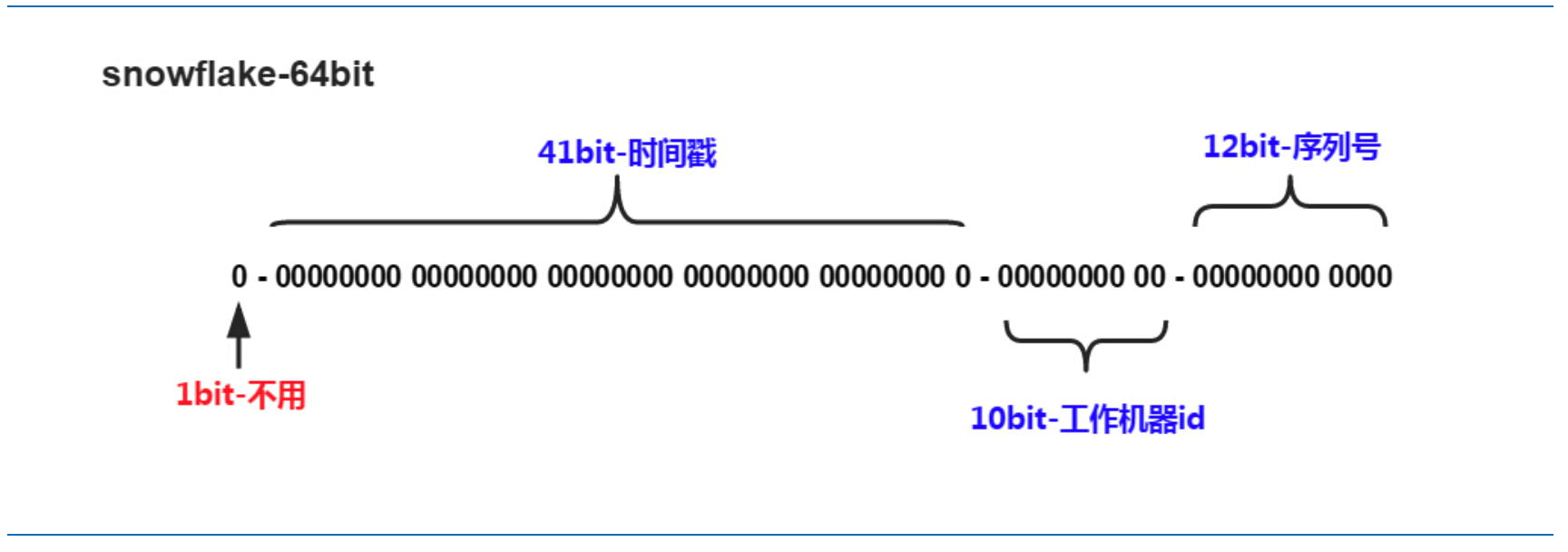1
2
3
4
5
6
7
8
9
10
11
12
13
14
15
16
17
18
19
20
21
22
23
24
25
26
27
28
29
30
31
32
33
34
35
36
37
38
39
40
41
42
43
44
45
46
47
48
49
50
51
52
53
54
55
56
57
58
59
60
61
62
63
64
65
66
67
68
69
70
71
72
73
74
75
76
77
78
79
80
81
82
83
84
85
86
87
88
89
90
91
92
93
94
95
96
97
98
99
100
101
102
103
104
105
106
107
108
109
110
111
112
113
114
115
116
117
118
119
120
121
122
123
124
125
126
127
128
129
130
131
132
133
134
135
136
137
138
139
140
141
142
143
144
145
| <?php
class Snowflake
{
const EPOCH_OFFSET = 1293811200000;
const SIGN_BITS = 1;
const TIMESTAMP_BITS = 41;
const DATA_CENTER_BITS = 5;
const MACHINE_ID_BITS = 5;
const SEQUENCE_BITS = 12;
protected $dataCenterId;
protected $machineId;
protected $lastTimestamp = null;
protected $sequence = 1;
protected $signLeftShift = self::TIMESTAMP_BITS + self::DATA_CENTER_BITS + self::MACHINE_ID_BITS + self::SEQUENCE_BITS;
protected $timestampLeftShift = self::DATA_CENTER_BITS + self::MACHINE_ID_BITS + self::SEQUENCE_BITS;
protected $dataCenterLeftShift = self::MACHINE_ID_BITS + self::SEQUENCE_BITS;
protected $machineLeftShift = self::SEQUENCE_BITS;
protected $maxSequenceId = ~ (-1 << self::SEQUENCE_BITS);
protected $maxMachineId = ~ (-1 << self::MACHINE_ID_BITS);
protected $maxDataCenterId = ~ (-1 << self::DATA_CENTER_BITS);
public function __construct($dataCenter_id, $machine_id)
{
if ($dataCenter_id > $this->maxDataCenterId) {
throw new \Exception('data center id should between 0 and ' . $this->maxDataCenterId);
}
if ($machine_id > $this->maxMachineId) {
throw new \Exception('machine id should between 0 and ' . $this->maxMachineId);
}
$this->dataCenterId = $dataCenter_id;
$this->machineId = $machine_id;
}
public function id()
{
$sign = 0;
$timestamp = $this->getUnixTimestamp();
if ($timestamp < $this->lastTimestamp) {
throw new \Exception('Clock moved backwards!');
}
if ($this->lastTimestamp == $timestamp) {
$this->sequence++;
if ($this->sequence > $this->maxSequenceId) {
return $this->id();
}
} else {
$this->sequence = 1;
}
$this->lastTimestamp = $timestamp;
$time = (int)($timestamp - self::EPOCH_OFFSET);
$id = ($sign << $this->signLeftShift) | ($time << $this->timestampLeftShift) | ($this->dataCenterId << $this->dataCenterLeftShift) | ($this->machineId << $this->machineLeftShift) | $this->sequence;
return (string)$id;
}
public function parse($id)
{
$binUuid = decbin($id);
$len = strlen($binUuid);
$sequenceStart = $len - self::SEQUENCE_BITS;
$sequence = substr($binUuid, $sequenceStart, self::SEQUENCE_BITS);
$machineIdStart = $len - self::MACHINE_ID_BITS - self::SEQUENCE_BITS;
$machineId = substr($binUuid, $machineIdStart, self::MACHINE_ID_BITS);
$dataCenterIdStart = $len - self::DATA_CENTER_BITS - self::MACHINE_ID_BITS - self::SEQUENCE_BITS;
$dataCenterId = substr($binUuid, $dataCenterIdStart, self::DATA_CENTER_BITS);
$timestamp = substr($binUuid, 0, $dataCenterIdStart);
$realTimestamp = bindec($timestamp) + self::EPOCH_OFFSET;
$timestamp = substr($realTimestamp, 0, -3);
$microSecond = substr($realTimestamp, -3);
return [
'timestamp' => date('Y-m-d H:i:s', $timestamp) . '.' . $microSecond,
'dataCenterId' => bindec($dataCenterId),
'machineId' => bindec($machineId),
'sequence' => bindec($sequence),
];
}
private function getUnixTimestamp()
{
return floor(microtime(true) * 1000);
}
}
|
